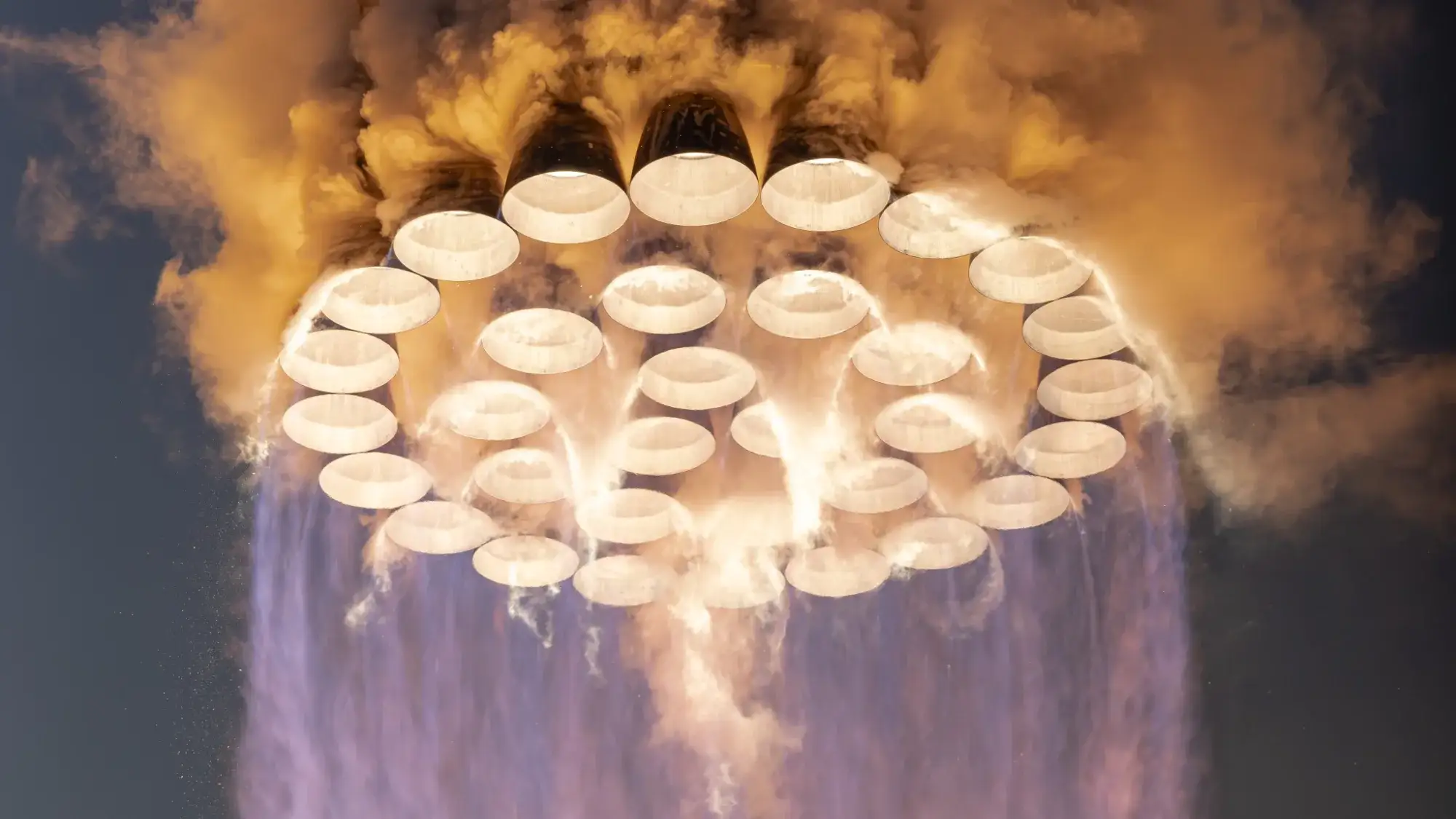Rocket engines are the backbone of space exploration, powering humanity’s dreams of venturing beyond our planet. This article delves into the best rocket engines in the world, ranking the top 10 rocket engines in the world based on critical parameters such as thrust, specific impulse (Isp), thrust-to-weight ratio, reusability, reliability, and more. These engines represent the pinnacle of modern engineering, driving advancements in space travel and interplanetary missions.
Table of Contents
1. SpaceX Raptor (USA, SpaceX)
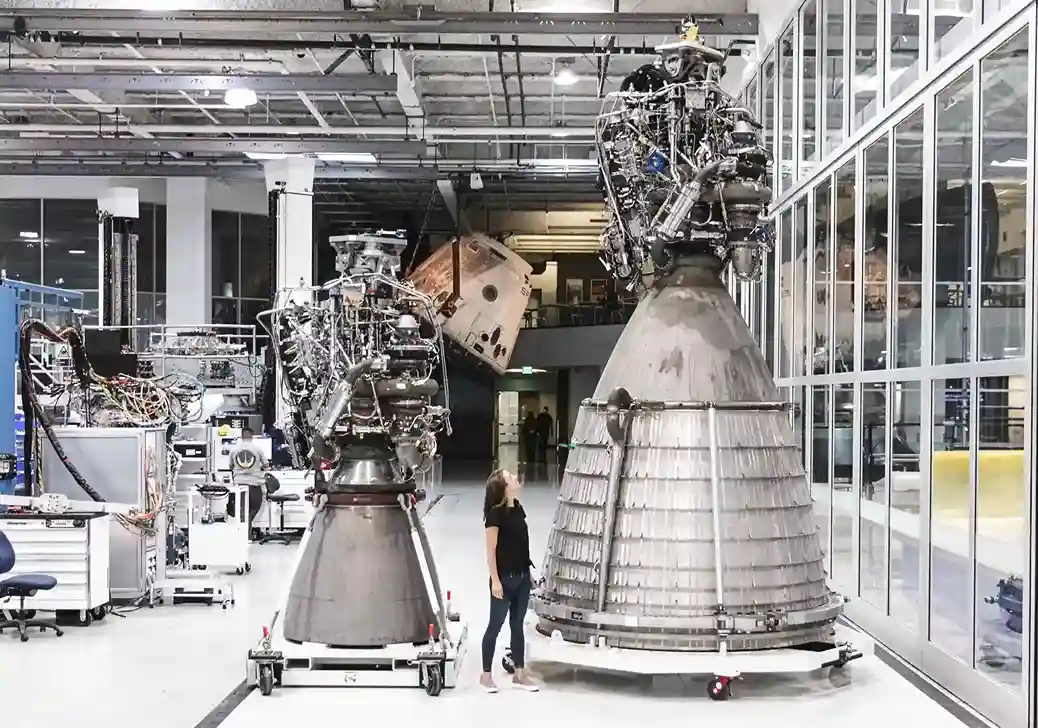
- Thrust: 230 metric tons (sea level)
- Isp: 330 s (sea level), 356 s (vacuum)
- Thrust-to-Weight Ratio: ~107
- Propellants: Liquid Methane and Liquid Oxygen (LCH4/LOX)
- Reusability: Designed for multiple uses
- Environmental Impact: Methane is less harmful and supports in-situ resource utilisation.
- Brief Info:
The Raptor engine is a revolutionary full-flow staged combustion engine developed by SpaceX, designed to power the fully reusable Starship and Super Heavy rocket. Its use of methane enables sustainable fuel production on Mars, making it ideal for interplanetary missions. The Raptor is a technological leap in terms of efficiency, thrust-to-weight ratio, and reusability. - Achievements:
It has already demonstrated its capabilities in multiple Starship test flights. Its scalability allows for clustering, with up to 33 Raptors powering the Super Heavy booster, making it the most powerful rocket system ever built.
2. Rocketdyne F-1 (USA, Rocketdyne)
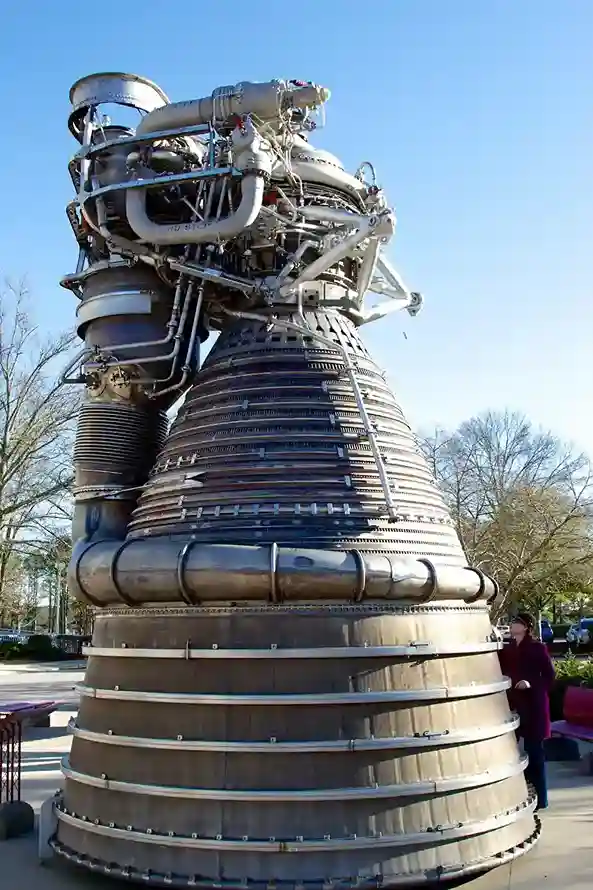
- Thrust: 1,522 metric tons (sea level)
- Isp: 263 s (sea level), 304 s (vacuum)
- Thrust-to-Weight Ratio: 94
- Propellants: RP-1 (refined kerosene) and Liquid Oxygen (LOX)
- Reusability: None (single-use)
- Environmental Impact: High emissions.
- Brief Info:
The F-1 engine, developed in the 1960s by Rocketdyne for NASA, remains the most powerful single-chamber liquid-fuel engine ever built. It served as the primary engine for the Saturn V rocket’s first stage, which was responsible for launching the Apollo missions to the Moon. - Achievements:
Despite being over 50 years old, its raw power remains unmatched. The F-1’s reliability and success rate in the Apollo program established it as best rocket engines in the world.
3. SpaceX Merlin 1D (USA, SpaceX)
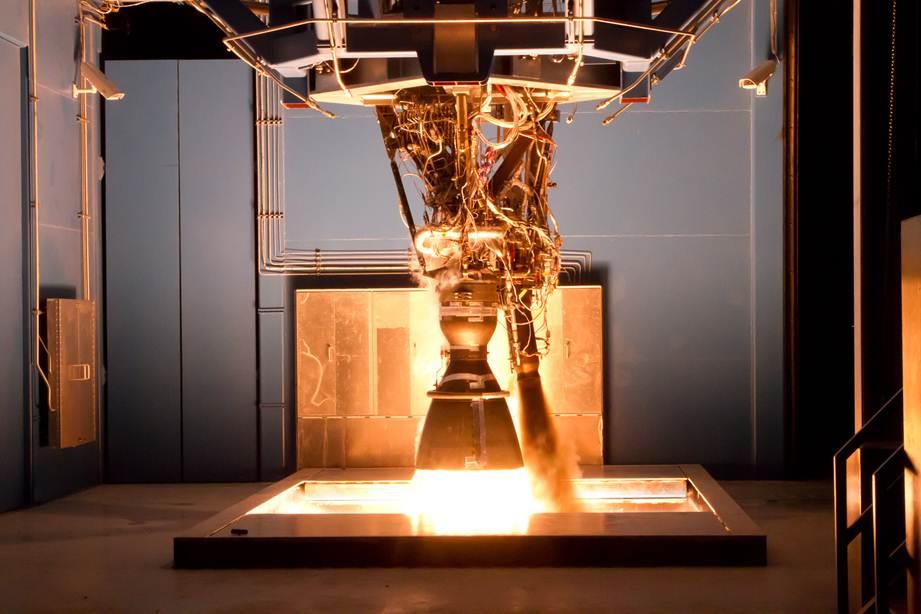
- Thrust: 845 kN (sea level)
- Isp: 282 s (sea level), 311 s (vacuum)
- Thrust-to-Weight Ratio: ~180 (one of the highest)
- Propellants: RP-1 and Liquid Oxygen (LOX)
- Reusability: Highly reusable
- Environmental Impact: Moderate emissions.
- Brief Info:
The Merlin 1D engine, developed by SpaceX, powers the Falcon 9 and Falcon Heavy rockets. Its design prioritizes simplicity and maintainability, allowing rapid refurbishment for reuse. - Achievements:
It holds the record for the highest thrust-to-weight ratio among operational engines. The Merlin engine has transformed the economics of spaceflight by supporting frequent, cost-efficient satellite launches and ISS resupply missions.
4. Blue Origin BE-4 (USA, Blue Origin)
- Thrust: 550,000 pounds (sea level)
- Isp: 310 s (sea level), 340 s (vacuum)
- Thrust-to-Weight Ratio: ~73
- Propellants: Liquid Methane and Liquid Oxygen (LCH4/LOX)
- Reusability: Designed for multiple uses
- Environmental Impact: Methane reduces soot formation and is eco-friendly.
- Brief Info:
The BE-4 engine, developed by Blue Origin, is intended to power the New Glenn and Vulcan Centaur rockets. It represents a shift toward cleaner and more efficient propellants. - Achievements:
As a methane-fueled engine, BE-4 is designed for long-term reusability and scalability. It is expected to compete with SpaceX’s Raptor in both performance and cost-effectiveness.
5. RD-170/RD-171 (Russia, NPO Energomash)
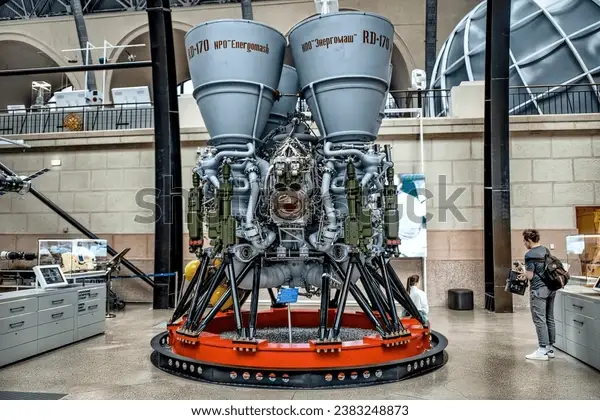
- Thrust: 7,904 kN (sea level for RD-170)
- Isp: 309 s (sea level), 337 s (vacuum)
- Thrust-to-Weight Ratio: 82
- Propellants: RP-1 and Liquid Oxygen (LOX)
- Reusability: Limited
- Environmental Impact: High emissions.
- Brief Info:
The RD-170 and its variants, developed by NPO Energomash, are among the most powerful rocket engines ever created. They were initially used in the Soviet Energia rocket and later adapted for modern launch systems. - Achievements:
The RD-170’s innovative design features four combustion chambers fed by a single turbopump, optimizing thrust and reliability.
6. Vulcain 2.1 (France, ArianeGroup)
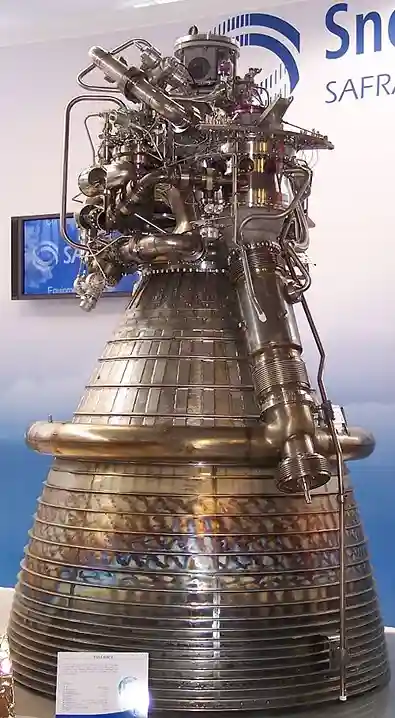
- Thrust: 1,370 kN (sea level)
- Isp: 431 s (vacuum)
- Thrust-to-Weight Ratio: ~58
- Propellants: Liquid Hydrogen (LH2) and Liquid Oxygen (LOX)
- Reusability: Not reusable
- Environmental Impact: Low emissions due to hydrogen fuel.
- Brief Info:
The Vulcain 2.1 engine powers the core stage of the Ariane 5 and Ariane 6 rockets. It is an upgraded version of the original Vulcain, featuring improved efficiency and performance. - Achievements:
The engine has been a reliable workhorse for European space missions, launching satellites, interplanetary probes, and cargo to the ISS. Its enhancements in the 2.1 version reduce production costs and improve maintainability for future missions.
7. RS-25 (USA, Aerojet Rocketdyne)
- Thrust: 1,860 kN (sea level)
- Isp: 366 s (sea level), 452 s (vacuum)
- Thrust-to-Weight Ratio: ~73
- Propellants: Liquid Hydrogen (LH2) and Liquid Oxygen (LOX)
- Reusability: Previously reusable (Space Shuttle), now expendable (SLS)
- Environmental Impact: Low emissions.
- Brief Info:
The RS-25, also known as the Space Shuttle Main Engine (SSME), is one of the most efficient engines ever developed. This engine is now a key component of NASA’s Space Launch System (SLS), powering the Artemis missions aimed at returning humans to the Moon. - Achievements:
The RS-25 powered 135 Space Shuttle missions with exceptional reliability. Its high specific impulse and adaptability for deep-space missions make it a standout engine even decades after its initial development.
8. RD-180 (Russia, NPO Energomash)
- Thrust: 3,820 kN (sea level)
- Isp: 311 s (sea level), 338 s (vacuum)
- Thrust-to-Weight Ratio: ~78
- Propellants: RP-1 and Liquid Oxygen (LOX)
- Reusability: Not reusable
- Environmental Impact: High emissions.
- Brief Info:
The RD-180, a two-chamber variant of the RD-170, powers the Atlas V rocket in the United States. Its high performance and reliability have made it a staple for satellite launches and interplanetary missions. - Achievements:
This engine has been critical for U.S. military and NASA missions, including the Mars rover launches. Despite geopolitical challenges, it remains one of the most efficient engines in its class.
9. LE-9 (Japan, Mitsubishi Heavy Industries)
- Thrust: 1,470 kN (sea level)
- Isp: 426 s (vacuum)
- Thrust-to-Weight Ratio: ~50
- Propellants: Liquid Hydrogen (LH2) and Liquid Oxygen (LOX)
- Reusability: Not reusable
- Environmental Impact: Low emissions.
- Brief Info:
The LE-9 engine is the main engine for Japan’s H3 rocket, designed for cost-effective and reliable satellite launches. It uses a simple expander cycle to reduce complexity and enhance reliability. - Achievements:
The LE-9 is a significant step forward for Japan’s space program, aiming to provide a competitive and sustainable launch system for commercial and governmental missions.
10. Sea Level Raptor (USA, SpaceX)
- Thrust: 2,300 kN (sea level)
- Isp: 330 s (sea level)
- Thrust-to-Weight Ratio: ~107
- Propellants: Liquid Methane and Liquid Oxygen (LCH4/LOX)
- Reusability: Highly reusable
- Environmental Impact: Methane fuel reduces soot and supports in-situ resource utilization.
- Brief Info:
The Sea Level Raptor is a variant of the Raptor engine optimized for operation at sea level. It powers the lower stages of SpaceX’s Starship and Super Heavy rockets. - Achievements:
This engine has demonstrated exceptional performance during Starship test flights, setting new standards for reusability and thrust-to-weight ratio. Its design aligns with SpaceX’s vision for affordable and sustainable space travel. - The Raptor Vacuum (RVac) which is no 1 in the list is optimised for space with an extended nozzle, achieving higher efficiency and specific impulse (~356 seconds) for deep-space missions. In contrast, the Sea Level Raptor is designed for atmospheric conditions, featuring a shorter nozzle for high thrust (~230 metric tons) during rocket liftoff.
Conclusion
The top 10 rocket engines in the world listed here represent the pinnacle of modern engineering, excelling in thrust, efficiency, reusability, and reliability. While notable engines like China’s YF-77 and YF-100, as well as India’s Vikas engine and CE-20, have played crucial roles in their respective space programs, they were not included in this list.
This is because they are optimised for cost-efficiency and reliability rather than achieving the highest global benchmarks in performance metrics like thrust-to-weight ratio, specific impulse, or reusability. Nevertheless, both nations are rapidly advancing, and their future engines are likely to compete at the highest level.
India’s engines, in particular, have been pivotal for missions like Chandrayaan and Gaganyaan, and they continue to evolve for future endeavours. To learn more about India’s ambitious plans, check out our article on Future Missions of ISRO or explore the Purpose of the Gaganyaan Mission.
